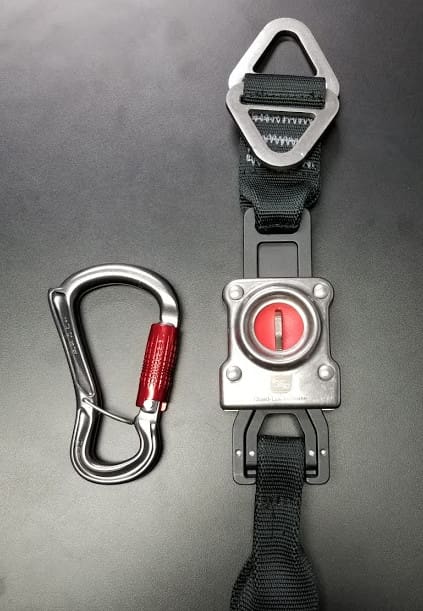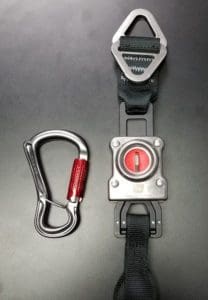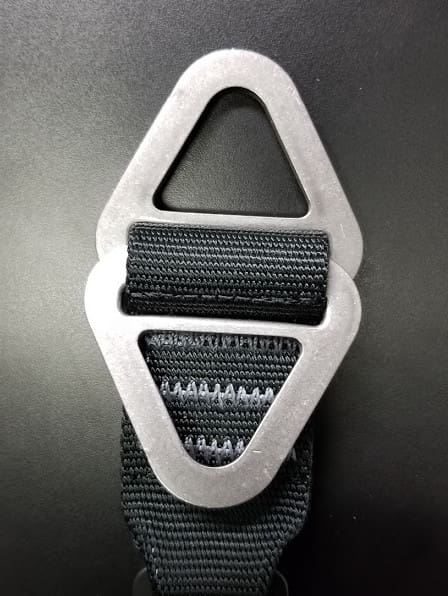
Worth the Wait – Quad-LOK Release: UPDATE
Recently, I passed my five-year mark here at LSC. I remember having great plans for my first year. None of them happened – or at least not in a year. Above anything else I’ve learned here, I’ve learned that 1. making valuable things is hard, and 2. making valuable things takes time. How much time? Longer than you think. In 2016 we started this project by coming up with a terrible idea for a release device and taping it to the boss’s door. Sam Maness hates a bad design and we knew if we made him look at it long enough, he’d commit to fixing it. What we didn’t know is that after he decided it was good enough, he’d get a better idea, scrap the entire project, and then start again. We complained a little but in the end, Sam’s slow and steady “they deserve the best” approach was the right one.
As the end of the year approaches and so many are asking for updates on the TRITON-QLR (Quad-LOK Release) I wanted to respond with an update here to let everyone know where things stand.
In the simplest of terms; the TRITON QLRs are available now, but we still have to build them. We have made 200 of the release devices, we’ve tested them, we are (very) satisfied with their performance, and we have everything we need to integrate them into a harness and ship them. For those of you (US Military only perhaps) that are not concerned with government certification, that’s good news. For any and all questions about pricing and lead times – please contact me directly – mario@lifesavingsystems.com. For everyone else, this process is now in the hands of the FAA. These things always take time, of course, and I don’t expect COVID is helping. Still, the final testing is going well and should be complete by the end of this year.

FAA Requirements:
Fatigue testing is underway of the new metal (stainless and titanium) parts that will be in the hoisting load of the new TRITON-QLR. The new lifting rings and the main titanium body and tumbler of the #930 QLR are being cycled 50,000 times under a variety of loads to prove the design acceptable for aircraft use. The cover release mechanism and primary release buttons are also being fatigue tested to determine their failure point.
The salt fog and dust tests have concluded and the QLR passed with full functionality following the exposure period. Icing testing is also underway. After all of the fatigue testing is complete, the final application goes to the FAA and all we can do is wait. It should take about 30 days to get the approvals, but COVID is having a minor impact on things here so it may take longer. Additionally, one of the projects in line at the FAA ahead of the TRITON QLR is the LSC Osprey Vest, so we may have had a hand in slowing things down ourselves.
Once we have the approval, we will assemble the first TRITON QLRs and send them out to those of you who are asking for units to test and evaluate. When do I think that will be? My guess – and I have been wrong about this for a year now, so keep that in mind – is late February to early March 2021.
What will be certified:
The only method for certification will be as a model of the currently approved 490 TRITON II MOLLE. Modifications to existing harnesses can not be certified. The QLR alone will not be certified by the FAA. Any operations who wish to integrate the #930 QLR into existing harnesses must gain their own engineering approval. All testing data for the #930 QLR can be made available for such efforts.
CASA Requirements for the QLR Wander Lead:
We are also making a Wander Lead with QLR that will attach to the TRITON QLR (and other harnesses). AS the FAA has no TSO for wander leads, we are sending this one to our friends in Australia for approval by CASA. That will likely happen after the FAA approval of the TRITON QLR, but just shortly after I believe.
Dual Hoist Considerations:
The problem to be solved here was how do we give the operator a secondary lifting ring that doesn’t require significant lengthening of the hoist riser. By using stamped V-Rings, we were able to take advantage of their flat-sided design and could simply put two rings in the same space as one. The webbing that holds them in place is just tight enough to allow for one ring to be rotated down. Once under a load, that ring is locked in place but still flexible enough to attach the second hoist hook. This – we believe – will give users the dual hoist recovery functionality they need without adding unnecessary riser length.


Questions or Requests:
If you have any questions or would like to be on the list of those to see samples, please contact me directly at mario@lifesavingsystems.com (or the usual suspects through Instagram or Messenger. You know who you are.)
Finally, I’d like to apologize for how long this is taking and then immediately retract; we try not to rush anything, but this is as critical a piece of gear as we have ever made. Your life hangs from this thing. Getting it right wasn’t an option. We have learned a lot during the development of the QLR and have made changes and changes again over the past two years. Many of you saw the first prototype (the #920) in Iceland over two years ago. If we’d have gone with that design, we could have been done by now but the improvements we discovered wouldn’t be there. This is a better device, and you all deserve the best, so we decided to make this one. I’m confident that when you finally get to your hands on one, you’ll feel like it has been worth the wait.
Mario Vittone, GM, Lifesaving Systems


Pingback: The TRITON Quad-LOK Release Harness – FAA APPROVED – Lifesaving Systems Corp